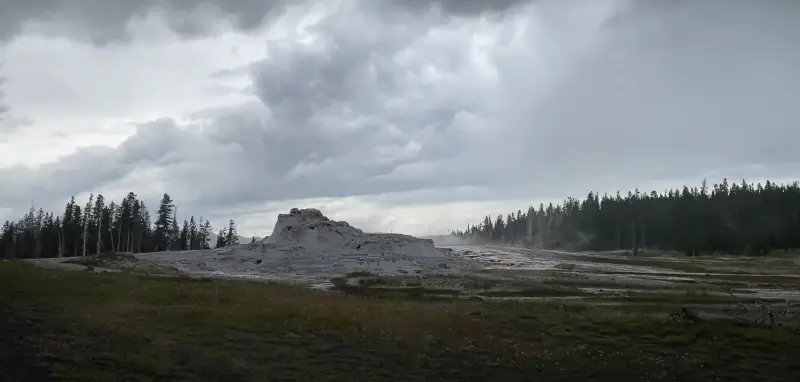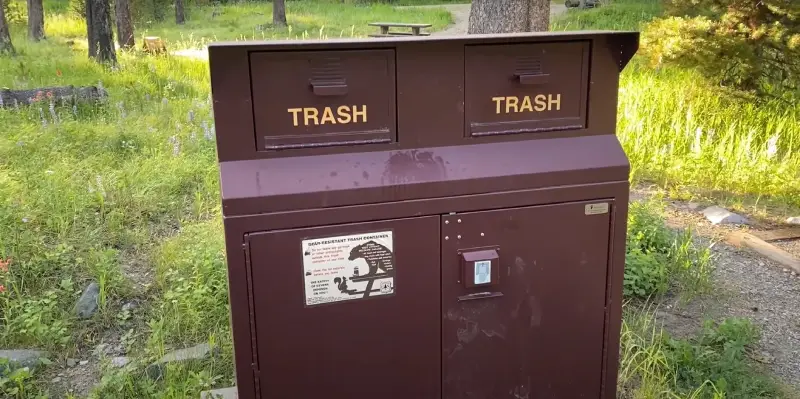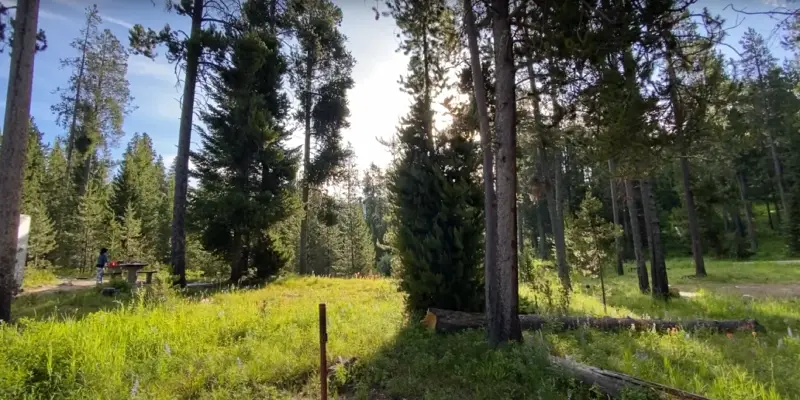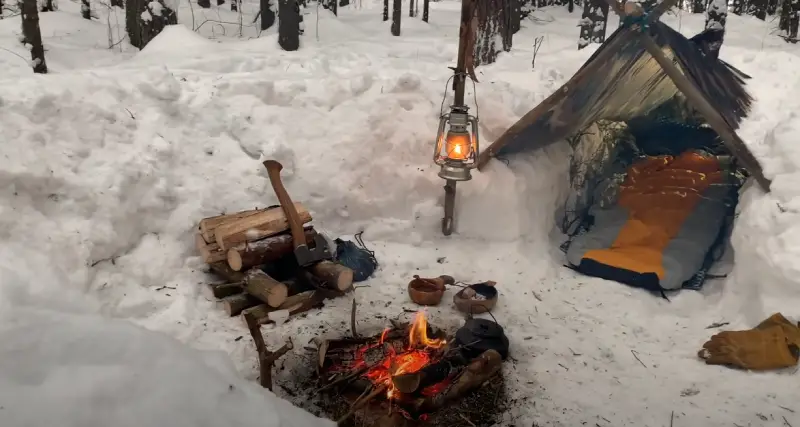Is Tent Camping Safe In Yellowstone: 9 Risks & 3 Precautions [Safety Tips]
I recently went on a tent camping expedition to Yellowstone National Park with my baby and furry friend. As a responsible mother, I had concerns about the safety of tent camping in a wild environment like Yellowstone.
I did my research, and after following a few simple precautions, I can confidently say that tentcamping in Yellowstone is a safe and enjoyable experience.
This blog post will share my experience, helpful tips, and suggestions for those considering embarking on the same adventure. From the beauty of nature to the potential dangers, I will cover everything you need to know to make the best of your next camping trip to Yellowstone.
Is Tent Camping Safe In Yellowstone: The Risks

The prospect of tent camping in Yellowstone with a baby and pet worried me as a traveling mother. After researching and experiencing the trip, I can share some insights about the risks and safety measures to take while camping in Yellowstone.
Wild Animals
One of the biggest concerns when camping in Yellowstone is wild animals. With abundant bears, bison, elk, and other wildlife in the park, it is essential to avoid encounters or attacks. Here are some tips to stay safe:
- Store all food and scented products in a bear-proof container or vehicle.
- Keep a reasonable distance from wild animals and never approach or feed them.
- Keep animals aware of your presence by making noise while hiking.
- Carry bear spray and know how to use it in an emergency.
Harsh Weather
Yellowstone experiences various weather, including extreme heat, cold, wind, and rain. As a camper, it is essential to be prepared for all situations and have the gear. Here are some essentials to pack:
- Warm clothing, including hats and gloves, even in the summer.
- A waterproof tent and rainfly.
- A sturdy camping stove to cook in all weather.
- Sunscreen and protective clothing are needed when the sun is intense.
- Insulated mats and sleeping bags to stay warm at night.
Yellowstone Tent Camping: Precautions

As a traveling mother who recently camped there with her baby and pet, it is essential to take precautions when camping in Yellowstone. This national park offers much but can pose various risks to campers.
Acquire Safety Gear
- Flashlight(s) and extra batteries.
- Bear spray and knowing how to use it.
- Portable camp stove with fuel.
- Multi-tool or pocket knife.
- First-aid kit with essential medicines.
- Whistle or air horn.
- Maps and compass.
Familiarize Yourself with Yellowstone’s Campgrounds
- Make a reservation in advance.
- Pick a campsite that meets your needs and interests.
- Check campground rules and regulations.
- Know the location of amenities, such as restrooms and food storage lockers.
- Understand how to dispose of trash and food waste properly.
Check Weather Forecasts Regularly
- Yellowstone’s weather can vary, and it’s crucial to be prepared for any conditions.
- Check forecasts before your trip and monitor them during your stay.
- Prepare for unexpected changes in weather, such as thunderstorms, snow, or high winds.
- Bring clothing and gear, including rain gear and warm clothing layers.
Camping in Yellowstone: 3 Benefits

I was excited to take on the adventure of camping in Yellowstone with my baby and pet. Safety was my top priority, so I researched and found that Yellowstone tent camping is safe and a great way to experience the beauty of nature up close. Here are some of the reasons why:
Proximity to Nature and Wildlife
Tent camping in Yellowstone allows you to experience its stunning natural beauty and diverse wildlife. During your stay, you can hike, fish, and explore geysers and waterfalls, all of which will immerse you in this beautiful environment. Remember, these animals are wild, and follow park guidelines to keep yourself and your family safe. Here are some safety tips to follow:
- Keep your pet on a leash always and within your immediate control.
- Always keep a safe distance from wildlife. Bears and wolves must be at least 100 yards away, and all other wildlife must be 25 yards from all other wildlife.
Cost-effective Accommodation
Tent camping is a cost-effective way to experience Yellowstone. There are 12 campgrounds in the park, with over 2,000 campsites available on a first-come, first-served basis. The campsite costs $15-$47 per night, depending on the site amenities and location. You can also bring all the gear, such as a tent, sleeping bag, and camp stove, to avoid the cost of renting equipment or staying in a hotel.
Peaceful and Remote Environment
Camping in Yellowstone provides a peaceful and remote environment, away from the hustle and bustle of everyday life. Disconnecting from technology and spending time in nature to improve your mental fitness and well-being is beneficial. Coming prepared and keeping safety in mind when camping with a baby and a pet is essential. Here are some essentials to bring:
- A reliable tent with a UV-resistant rainfly and a tent footprint for extra protection against the elements.
- Sleeping pads and sleeping bags for a comfortable night’s sleep.
- A camp stove with extra fuel and utensils for cooking meals.
- A first-aid kit and insect repellent.
- Water bottles and a water filter or purification method.
Yellowstone Tent Camping Safety: 3 Tips
Having a baby and a pet, I realize the necessity of staying safe when camping in Yellowstone. Here are some safety tips that I have learned from my experience:
Staying Away From Wild Animals
Yellowstone is home to many wild animals, such as bears, wolves, elk, and bison. While seeing them in their natural habitat is exciting, keeping a safe distance is essential to avoid dangerous encounters. Here are some tips:
- Use binoculars to watch wildlife from a safe distance.
- Stay calm and back away slowly if you encounter a bear. Do not run or climb trees.
- Keep your pet on a leash to avoid any confrontations with wildlife.
Storing Food in Bear-Resistant Containers
The smell of food attracts bears, so storing your food and cooking supplies in bear-resistant containers is essential. Here are some tips:
- Use a bear-resistant cooler or storage container to store your food and cooking supplies.
- Keep the container at least 100 yards away from your campsite.
- Don’t cook or eat in your tent, as the smell of food can attract bears.
- Dispose of all trash in bear-resistant dumpsters, or take it with you when you leave.
Using Safe Fire Practices
Camping often involves building a fire for warmth and cooking, but it’s essential to use safe fire practices to avoid any accidents. Here are some tips:
- Check for any fire restrictions or warnings before starting a fire.
- Build your fire in a designated fire ring or grill.
- Keep a bucket of water and a shovel nearby in case of embers or sparks.
- Don’t leave your fire unattended. Ensure it’s completely extinguished before leaving.
Conclusion
After spending a few days in Yellowstone with my baby and pet, I am confident in the safety of tenting there as long as you take the precautions. With the right equipment and knowledge, you can effectively mitigate risks such as encountering wildlife or adverse weather.
If you plan camping, I highly recommend buying safety gear, like bear spray and bear-resistant containers. It is also essential to familiarize yourself with Yellowstone’s campgrounds and regularly check weather forecasts to ensure safety.
Be careful not to be bitten by wild animals, and always use safe fire practices. I highly recommend tent camping in Yellowstone to anyone who enjoys the great outdoors, as it is an excellent way to immerse yourself in nature.


